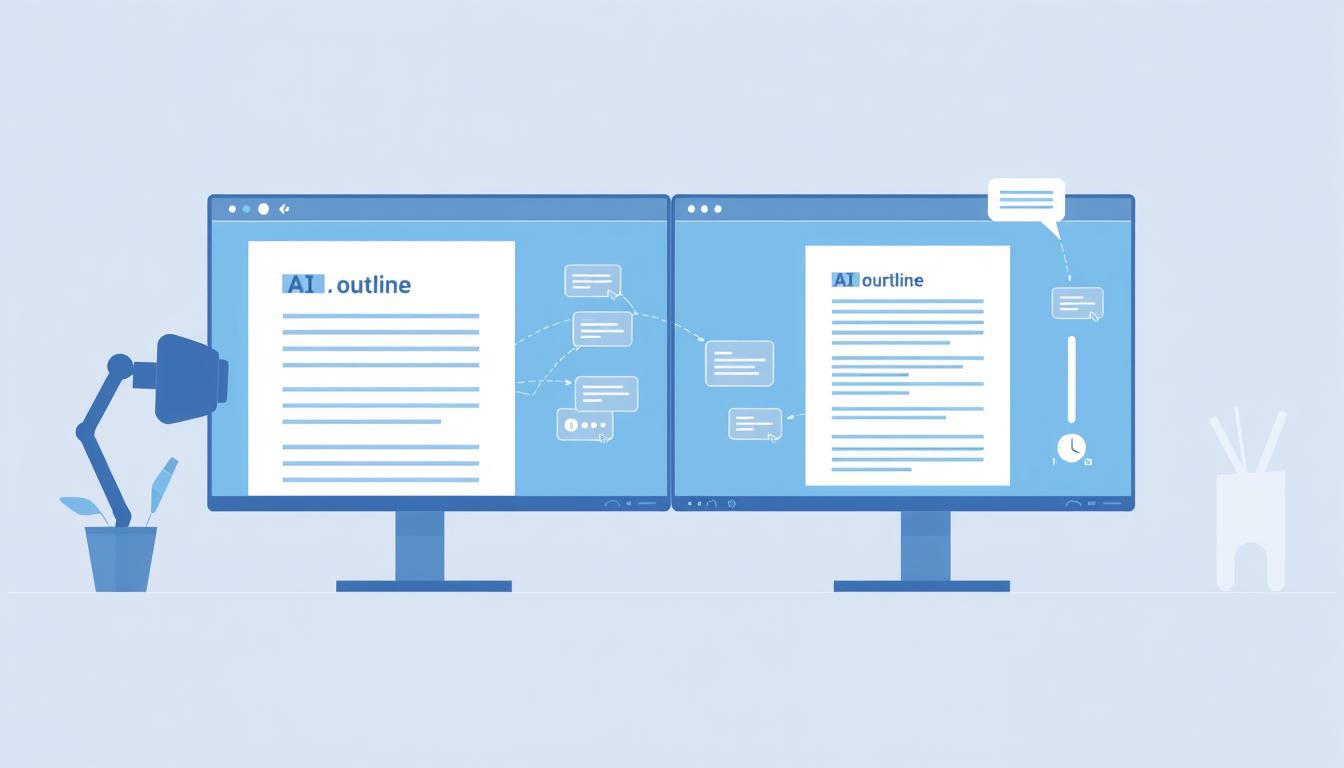The content creation landscape has undergone a remarkable transformation with the rise of artificial intelligence. What once took hours or even days to produce can now be accomplished in minutes. For bloggers and content creators, AI tools have become invaluable allies in the battle against writer’s block, tight deadlines, and the constant demand for fresh content.
But how exactly can you harness the power of AI for your blog without sacrificing quality or authenticity? This comprehensive guide will walk you through the practical applications of AI in content creation, from ideation to publication, while ensuring your content remains uniquely human and compliant with platform policies.
The AI Revolution in Content Creation
AI has fundamentally changed how we approach content creation. According to recent studies, content creators using AI tools report productivity increases of up to 66% – allowing them to focus more on strategy and less on routine writing tasks.
The most significant advantage isn’t just speed, but versatility. Today’s AI tools can help with nearly every aspect of the content creation process:
- Generating fresh topic ideas when you’re stuck
- Creating comprehensive outlines in seconds
- Drafting initial content that you can refine
- Optimizing your content for search engines
- Editing and proofreading your work
- Creating supporting visuals and graphics
However, the key to success lies not in replacing human creativity but in finding the perfect balance between AI efficiency and your unique voice. Let’s explore how to achieve this balance through a practical, step-by-step approach.
Best AI Tools for Content Creation and Blogging
Before diving into the process, it’s important to understand the tools available. Here are some of the most effective AI solutions for different aspects of content creation:
For Ideation and Research
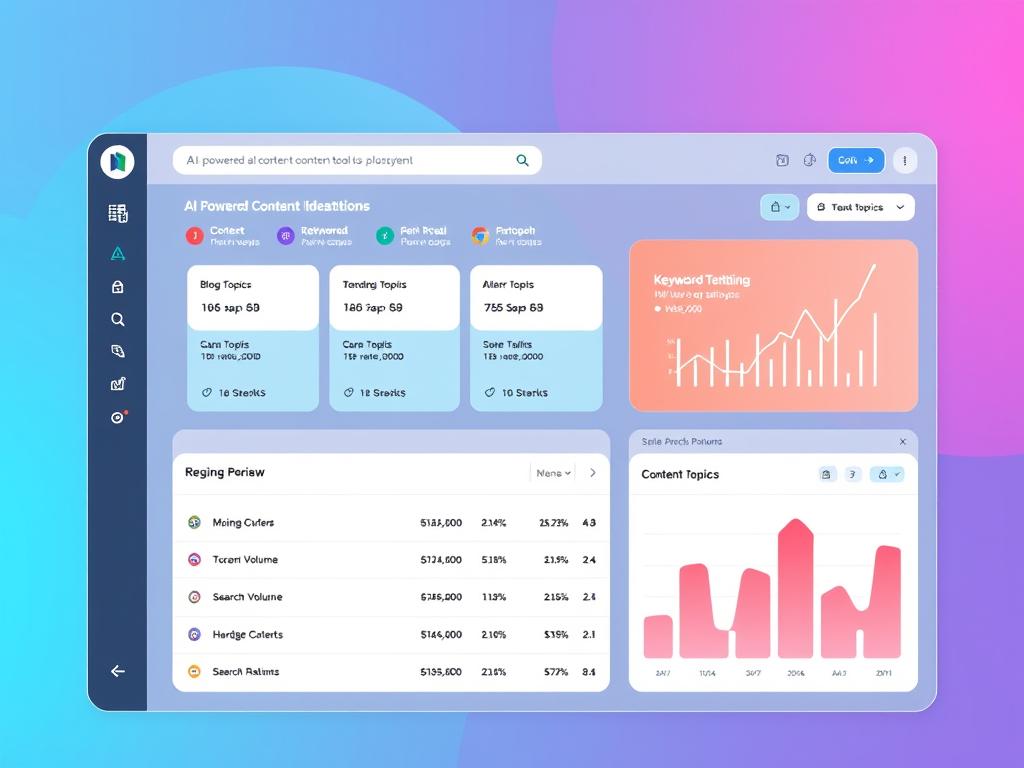
ChatGPT
OpenAI’s versatile tool excels at brainstorming topics, creating outlines, and answering research questions. The free version is powerful, while the Plus subscription offers more advanced capabilities.
Google Gemini
Google’s AI assistant provides excellent research capabilities with direct access to search data, making it particularly useful for trending topics and fact verification.
AnswerThePublic
This tool visualizes questions people are asking about your topic, helping you identify content gaps and create comprehensive articles that address reader concerns.
For Content Writing and Editing
Jasper
A specialized AI writing assistant designed specifically for marketers and content creators, with templates for various content types and built-in SEO capabilities.
Grammarly
Goes beyond basic spell-checking to offer style suggestions, tone adjustments, and readability improvements that make your content more engaging.
Hemingway Editor
Helps simplify complex writing by identifying passive voice, complicated sentences, and readability issues that might turn readers away.
For SEO and Distribution
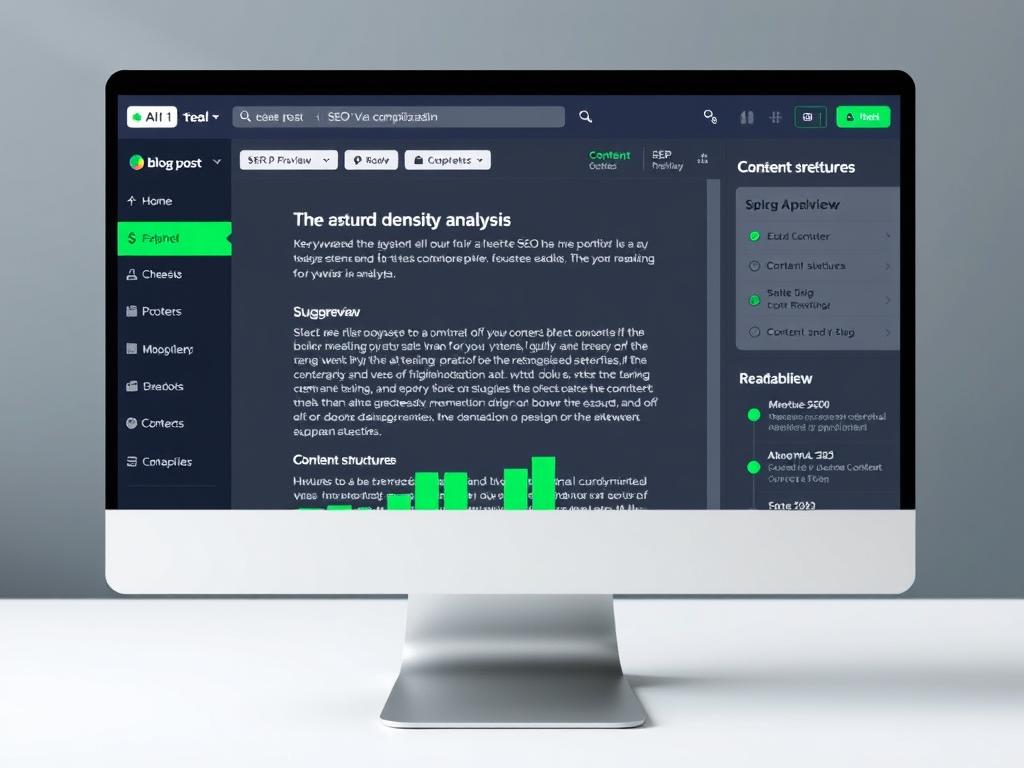
Surfer SEO
Analyzes top-ranking content to provide data-driven recommendations for optimizing your articles, including keyword density, headings, and content structure.
MarketMuse
Uses AI to identify content gaps in your niche and suggests topics that can help establish your authority in specific subject areas.
Hootsuite
While not strictly an AI tool, its integration with AI content creation platforms helps schedule and distribute your content across multiple channels.
Ready to Supercharge Your Content Creation?
Try these AI tools today and experience the difference in your productivity. Most offer free trials so you can find the perfect fit for your workflow.
The AI-Enhanced Content Creation Process
Now that we’ve covered the tools, let’s walk through a step-by-step process for creating high-quality blog content with AI assistance:
1. Topic Research and Ideation

The content creation process begins with finding the right topics that resonate with your audience and align with your content strategy. Here’s how AI can help:
Traditional Approach:
- Manually research keywords using basic tools
- Browse competitor blogs for inspiration
- Guess what your audience might want to read
- Spend hours brainstorming potential angles
AI-Enhanced Approach:
- Use AI to analyze search trends and identify content gaps
- Generate dozens of topic ideas in minutes
- Evaluate topic potential with predictive performance metrics
- Identify unique angles that competitors haven’t covered
“I used to spend 3-4 hours just coming up with blog topics each month. With AI tools, I can generate a quarter’s worth of content ideas in under 30 minutes, and they’re often more creative than what I’d come up with on my own.”
AI Prompt Example for Topic Generation:
“Generate 10 blog post ideas about [your niche] that address common questions beginners have. For each idea, include a compelling headline, 3 key points to cover, and why this topic would be valuable to my audience.”
2. Content Outlining and Structure
Once you’ve selected a topic, AI can help create a comprehensive outline that ensures your content is well-structured and covers all essential points:
Traditional Approach:
- Create basic outlines based on intuition
- Research each section individually
- Manually check competitor content for gaps
- Revise outline multiple times during writing
AI-Enhanced Approach:
- Generate comprehensive outlines with all key sections
- Analyze top-ranking content to identify must-have elements
- Include relevant statistics and data points automatically
- Structure content for optimal readability and SEO
AI Prompt Example for Outlining:
“Create a detailed outline for a 2,000-word blog post about [your topic]. Include an introduction, 5-7 main sections with subheadings, key points to cover in each section, and a conclusion. Structure the outline to address both beginner and intermediate questions about the topic.”
3. Draft Generation

This is where AI truly shines – generating a first draft based on your outline that you can then refine and personalize:
Traditional Approach:
- Start with a blank page (and often, writer’s block)
- Write each section from scratch
- Spend hours on the first draft
- Struggle with transitions between sections
AI-Enhanced Approach:
- Generate a complete first draft in minutes
- Provide specific instructions for tone and style
- Include placeholders for personal examples
- Create smooth transitions between sections
AI Prompt Example for Draft Generation:
“Using the outline below, write a 2,000-word blog post about [your topic]. Use a conversational tone, include relevant examples, and address common questions readers might have. Leave placeholders where I should add personal experiences or case studies.”
Important: Fact-Checking AI Content
Always verify facts, statistics, and references in AI-generated content. AI models can occasionally “hallucinate” information or present outdated data. Use tools like Google Scholar or industry reports to confirm any claims before publishing.
4. Humanizing and Editing
This critical step transforms AI-generated content into something uniquely yours:
Traditional Approach:
- Focus mainly on grammar and spelling
- Make minor adjustments to flow
- Limited time for creative improvements
AI-Enhanced Approach:
- Add personal anecdotes and experiences
- Inject your unique voice and perspective
- Include industry-specific insights
- Enhance with current examples and case studies
“The editing phase is where the magic happens. I view AI-generated content as a collaborative first draft that gives me a foundation to build upon. By adding my personal experiences and insights, the final piece becomes uniquely mine while taking a fraction of the time to produce.”
5. SEO Optimization
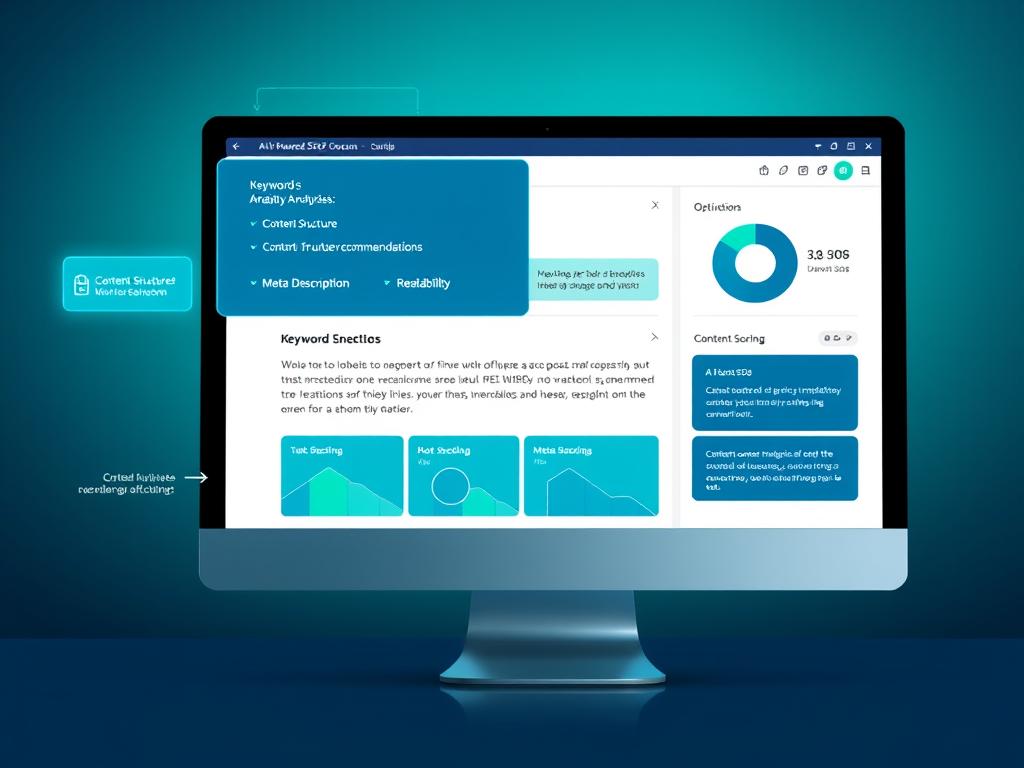
AI tools can help ensure your content ranks well in search engines:
Traditional Approach:
- Manually check keyword density
- Guess at optimal heading structure
- Write meta descriptions from scratch
AI-Enhanced Approach:
- Analyze top-ranking content for patterns
- Get suggestions for keyword placement
- Generate optimized meta descriptions
- Identify content gaps compared to competitors
AI Prompt Example for SEO Optimization:
“Analyze this blog post and suggest improvements for SEO. Identify opportunities to naturally include the keyword [your keyword] and related terms. Suggest an optimized meta description and title tag that would improve click-through rates from search results.”
Enhance Your SEO Knowledge
Want to learn more about optimizing your AI-generated content for search engines? Download our free guide to AI-friendly SEO practices.
How to Humanize AI-Generated Content
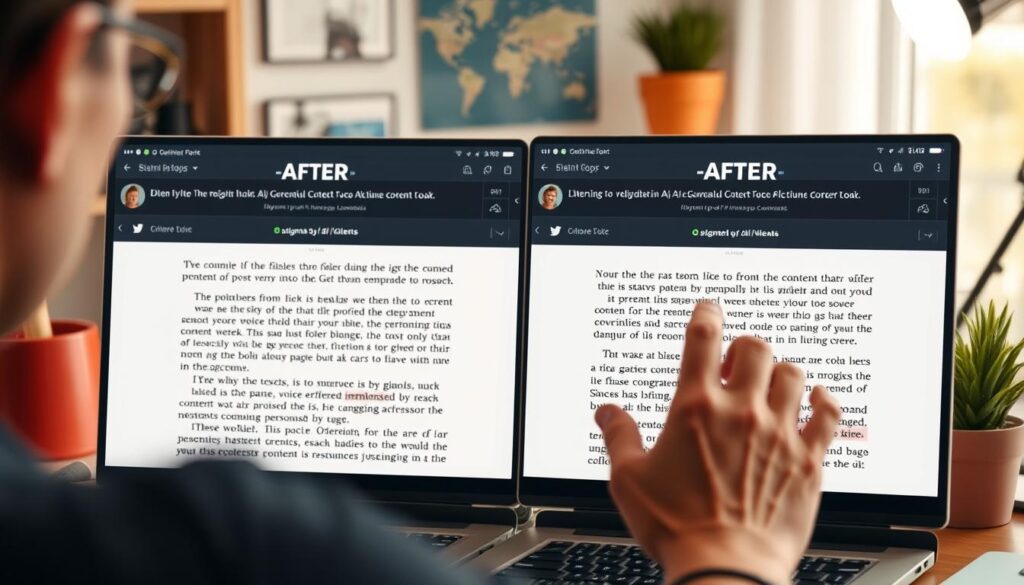
The key to successful AI content creation lies in making it uniquely yours. Here are practical strategies to ensure your content maintains that human touch:
1. Inject Personal Experiences
Nothing humanizes content like personal stories and experiences that AI simply cannot fabricate:
- Add case studies from your own work or business
- Share lessons learned from personal successes and failures
- Include conversations you’ve had with clients or colleagues
- Describe your journey with the topic you’re writing about
2. Develop a Consistent Voice
Your writing voice is your content fingerprint – it’s what makes your work recognizably yours:
- Create a voice guide that defines your typical expressions and tone
- Edit AI content to match your natural speaking patterns
- Include phrases and idioms you commonly use
- Maintain consistent humor or seriousness across all content
3. Add Original Insights
Differentiate your content with perspectives that only you can provide:
- Challenge common assumptions in your industry
- Offer predictions based on your expertise
- Provide unique frameworks for approaching problems
- Connect ideas from different fields in unexpected ways
“The best AI-assisted content doesn’t read like it was written by AI at all. It reads like it was written by you on your most productive, creative day – because that’s essentially what it is.”
4. Update with Current Information
AI models have knowledge cutoffs and may not include the latest developments:
- Add recent statistics from authoritative sources
- Reference current events relevant to your topic
- Include the latest industry developments that AI might miss
- Update examples to reflect the current market landscape
Avoiding AI Detection
Many platforms are implementing AI content detection. To ensure your content passes these checks, focus on thorough editing, adding original research, varying sentence structures, and including personal insights that AI cannot generate.
AdSense Compliance for AI-Generated Content
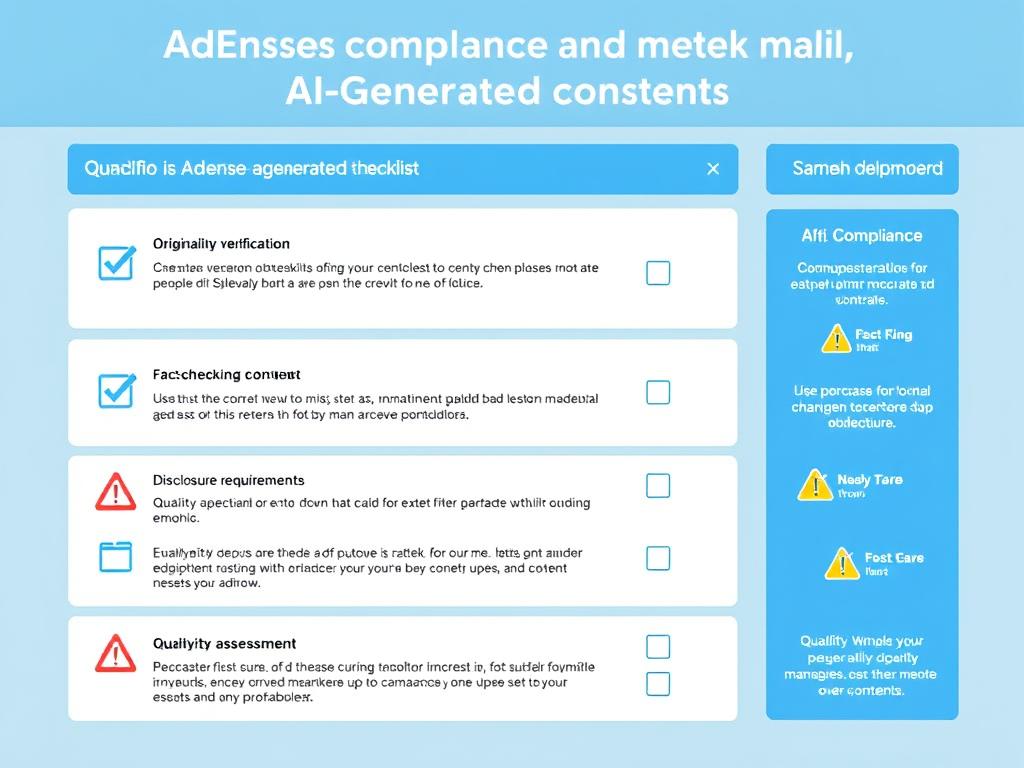
If you’re monetizing your blog with AdSense, it’s crucial to ensure your AI-generated content meets all compliance requirements:
| Requirement | Implementation | Tools to Help |
| Original Content | Thoroughly edit AI outputs and add unique insights | Copyscape, Originality.ai |
| Factual Accuracy | Verify all facts, statistics, and claims | Google Scholar, industry reports |
| Valuable Content | Ensure content provides genuine value to readers | User feedback tools, analytics |
| Proper Disclosure | Consider disclosing AI assistance if substantial | Disclosure templates |
| No Misleading Claims | Avoid exaggerating AI capabilities or results | Editorial guidelines |
AdSense Policy Tip
Google’s focus is on content quality, not how it was created. Well-edited, valuable AI-assisted content that provides genuine utility to readers generally meets AdSense requirements, provided it’s factually accurate and original.
Case Study: AI-Enhanced Blogging in Action
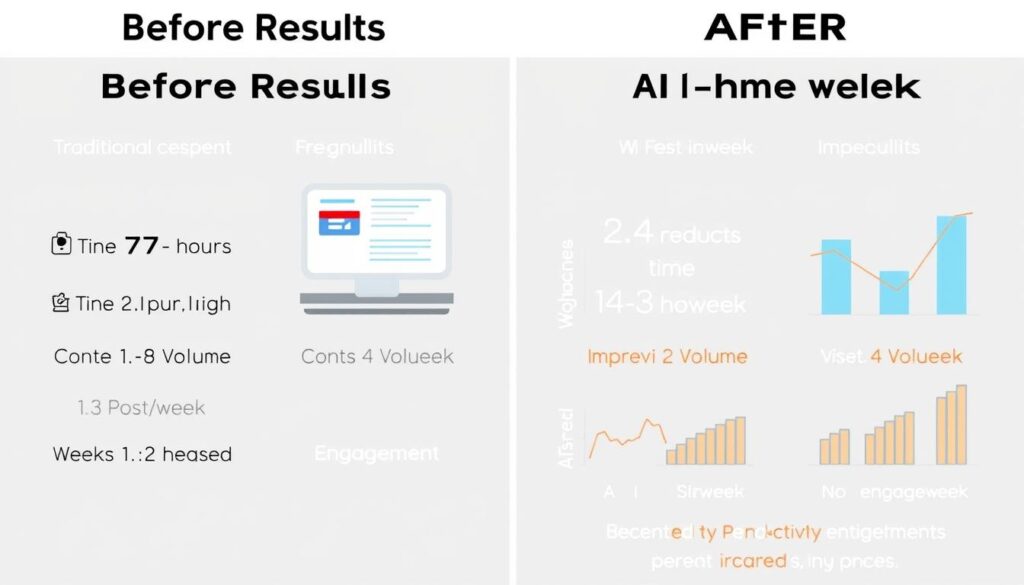
Let’s look at a real-world example of how implementing AI tools transformed one blogger’s content creation process:
Meet Alex: Tech Blogger and Content Creator
Alex runs a tech blog focusing on productivity tools and software reviews. Before implementing AI in his workflow, he struggled with:
- Publishing only 1-2 articles per week despite working full-time on his blog
- Spending 6-8 hours on each article from research to publication
- Experiencing frequent writer’s block when starting new topics
- Inconsistent SEO performance due to time constraints
Alex’s AI Implementation Strategy
Alex integrated AI tools into his workflow in phases:
- Started using AI for topic research and outlining (2 weeks)
- Added AI draft generation while maintaining heavy editing (1 month)
- Implemented AI-powered SEO optimization (2 months)
- Developed a system for humanizing and fact-checking AI content (3 months)
The Results
After six months of refining his AI-enhanced workflow, Alex achieved:
- Consistent publication of 4-5 high-quality articles per week
- Reduced average creation time to 2-3 hours per article
- More time for promotion, networking, and strategic planning
- Improved work-life balance despite producing more content
“The biggest surprise wasn’t just the time savings—it was how much more creative I became. By offloading the routine aspects of content creation to AI, I had more mental space for innovative ideas and deeper analysis. My content is actually better now than when I wrote everything from scratch.”
Ethical Considerations and Best Practices

As AI becomes more integrated into content creation, ethical considerations become increasingly important:
Ethical AI Content Practices
- Fact-check all AI-generated information
- Add original research and insights
- Consider transparency about AI usage
- Maintain editorial oversight
- Focus on providing genuine value
Practices to Avoid
- Publishing unedited AI content
- Generating content at scale without review
- Making claims without verification
- Using AI to create misleading information
- Prioritizing quantity over quality
Transparency Considerations
Should you disclose your use of AI in content creation? There are different perspectives:
Arguments For Disclosure:
- Builds trust with your audience
- Sets appropriate expectations
- Demonstrates transparency
- Educates readers about AI capabilities
Arguments Against Disclosure:
- AI is simply a tool, like spell-check
- Content should be judged on quality, not creation method
- May create unnecessary bias against good content
- Not required if content is thoroughly edited
A Balanced Approach
Consider the context of your blog and audience expectations. Many creators opt for a middle ground: mentioning AI tools in their “About” page or process descriptions without labeling each individual piece of content.
Stay Updated on AI Ethics
The landscape of AI content creation is evolving rapidly. Subscribe to our newsletter for the latest updates on ethical guidelines, best practices, and tool recommendations.
The Future of AI in Content Creation and Blogging
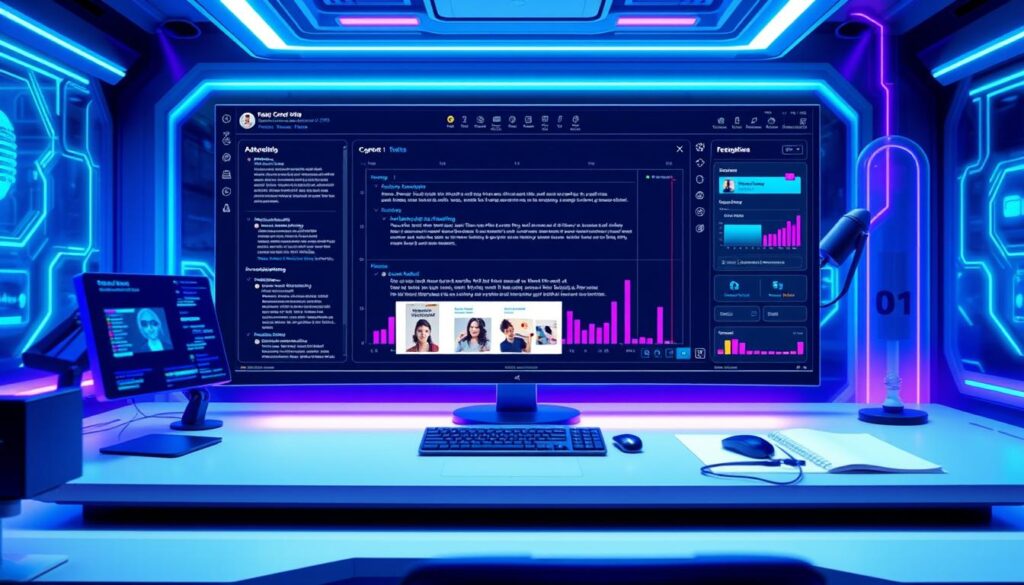
As we look ahead, several emerging trends will shape how we use AI for content creation:
1. Multimodal Content Creation
Future AI tools will seamlessly integrate text, image, audio, and video creation in a single workflow, allowing for truly comprehensive content packages with minimal technical expertise required.
2. Personalization at Scale
AI will enable the creation of dynamically personalized content that adapts to individual reader preferences, behavior, and history – delivering unique experiences to each visitor while maintaining your core message.
3. Real-time Collaboration
The line between human and AI contributions will blur as tools evolve to suggest improvements, alternatives, and enhancements in real-time as you write and edit.
4. Enhanced Fact-checking
AI systems will increasingly incorporate built-in verification against trusted sources, reducing the manual fact-checking burden while improving accuracy.
“The future of content creation isn’t about AI replacing humans—it’s about a new kind of collaboration where each contributes their strengths. AI brings efficiency, data analysis, and pattern recognition; humans bring creativity, emotional intelligence, and ethical judgment.”
Conclusion: Finding Your AI-Human Balance

AI for content creation and blogging represents one of the most significant shifts in how we produce and distribute information since the advent of the internet itself. When implemented thoughtfully, it can dramatically increase your productivity while maintaining—or even enhancing—the quality of your content.
The most successful content creators aren’t those who rely entirely on AI or reject it completely. Rather, they’re the ones who find the optimal balance between AI efficiency and human creativity, leveraging each for its strengths while compensating for its weaknesses.
As you begin integrating AI into your content creation process, remember that it’s a tool to enhance your voice, not replace it. The unique perspectives, experiences, and insights you bring to your content are irreplaceable—AI simply helps you express them more efficiently and effectively.
Start small, experiment often, and continuously refine your approach. With time and practice, you’ll develop an AI-enhanced workflow that dramatically increases your output while preserving the authentic connection with your audience that makes your content truly valuable.
Ready to Transform Your Content Creation?
Download our comprehensive guide with step-by-step instructions, prompt templates, and workflow diagrams to implement everything you’ve learned in this article.
Is AI-generated content detectable?
Yes, there are tools designed to detect AI-generated content, though their accuracy varies. The more you edit, personalize, and add your own insights to AI-generated drafts, the less likely they are to be flagged as AI-created. Focus on thorough editing, adding personal examples, and varying sentence structures to create truly unique content.
Will Google penalize AI-generated content?
Google has stated that they evaluate content based on quality, not how it was created. Their focus is on whether content provides value to users. Well-edited, factually accurate, and insightful AI-assisted content that meets user needs is generally treated the same as human-written content. The key is ensuring your content is helpful, reliable, and people-first.
How much editing should I do to AI-generated content?
The amount of editing needed depends on the quality of the initial output and your specific goals. At minimum, you should fact-check all information, add personal insights and examples, adjust the tone to match your voice, and ensure the content flows naturally. Many successful creators report spending about 30-50% of the time they would have spent writing from scratch on editing AI-generated content.
